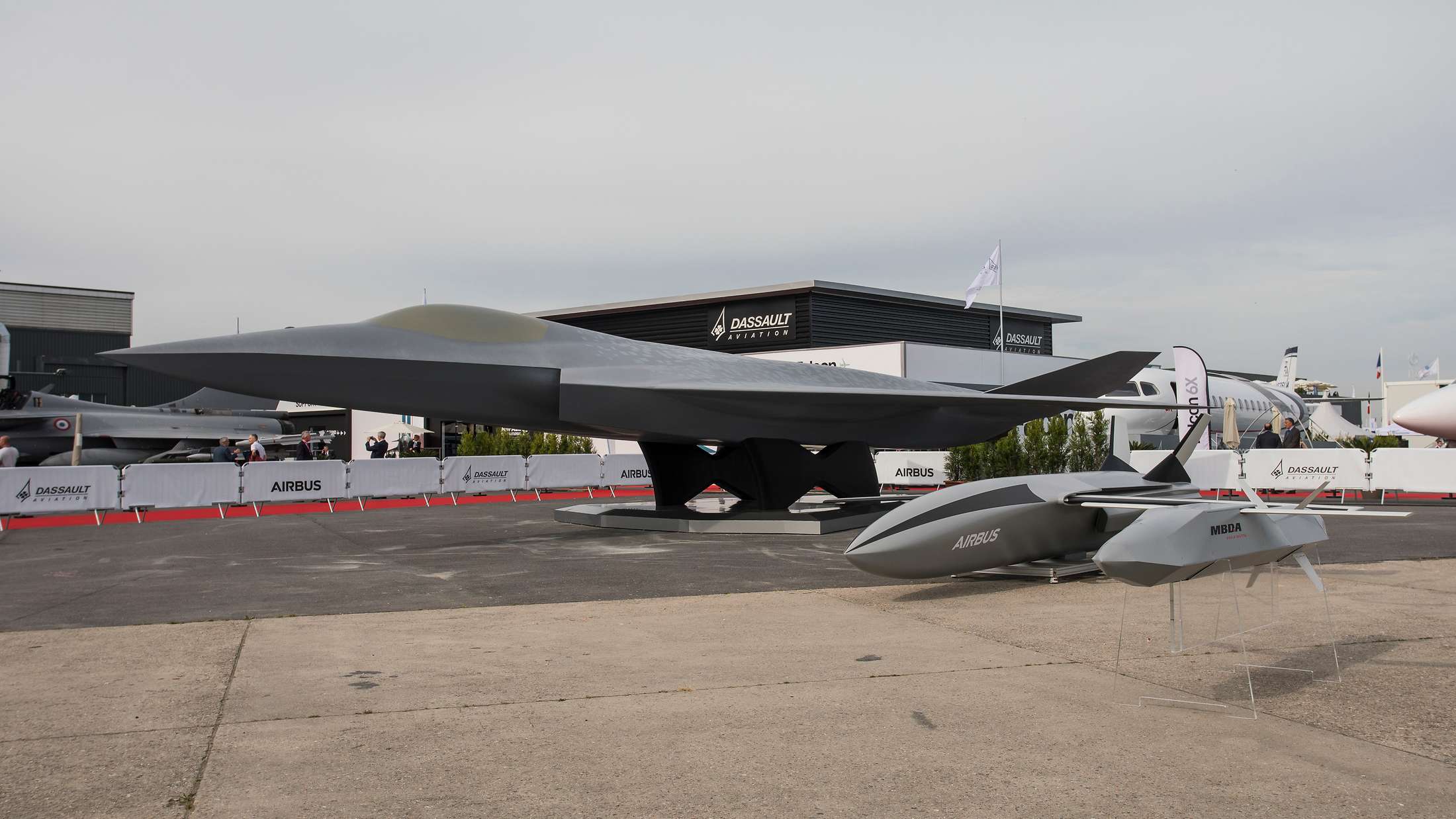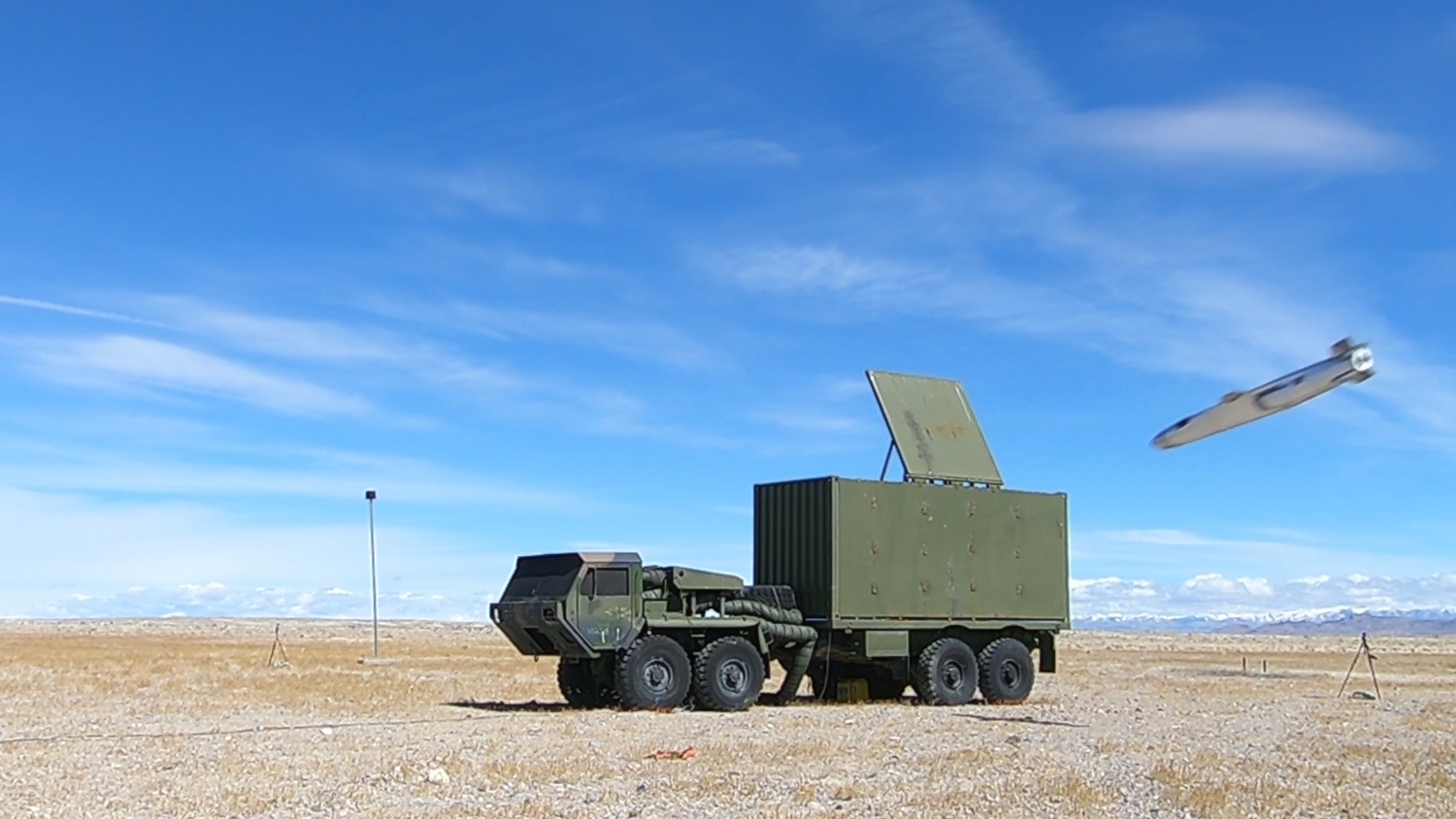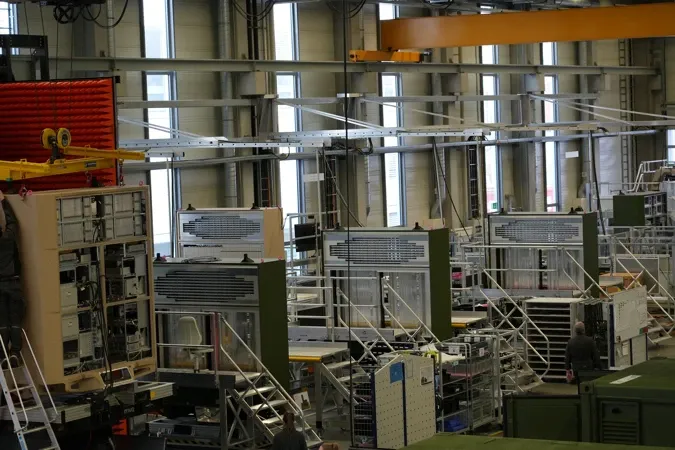Eurofighter Tranche-5: Germany's High-Stakes Bet on Industrial Sovereignty
Beyond the €3.75 billion order, Berlin’s autonomy hinges on who controls radar processors, EW code, and the funding discipline to sustain capability layers through the 2030s.
Strategic Bottom Line: Germany’s €3.75 billion procurement of 20 Eurofighter Tranche-5 jets is a defensive industrial maneuver disguised as a capability upgrade. While it secures a critical production bridge to the next-generation FCAS program, the project's success is entirely dependent on Berlin's ability to navigate severe post-2027 fiscal headwinds and overcome persistent technological dependencies on foreign partners. Failure to do so will leave the German Luftwaffe with a costly and rapidly aging asset.
Key Judgements around the Eurofighter Tranche-5:
- An Industrial Stopgap, Not a Capability Leap: The primary purpose of this €3.75 billion order is to prevent a production gap at Airbus before the next-generation FCAS is ready. It does not solve the Luftwaffe's growing capability deficit against advanced threats and risks delivering an already obsolete platform by the 2030s.
- Aspirational Autonomy, Structural Dependency: While framed as a move toward European sovereignty, the program's most critical subsystems—notably radar processors and electronic warfare software—remain dependent on non-German and U.S. technology. That dependency means Berlin can operate the jets, but not fully command their digital backbone—nor guarantee export freedom without U.S. approval.
- The Platform is Funded; The Capability is Not (Yet): The headline price covers the airframes. The true programmatic risk lies in securing consistent, multi-year funding for the essential "invisible" layers—software, sensor upgrades, and weapons integration—after the Sondervermögen is depleted post-2027. Without this sustained fiscal discipline, Germany will be left with a hollow fleet.
Introduction
On 8 October 2025, the Bundestag's Budget Committee approved €3.75 billion for 20 Eurofighter Tranche 5 aircraft. The decision was championed by Defence Minister Boris Pistorius as a cornerstone of the Zeitenwende. With deliveries planned for 2031-2034, the session cleared 14 programs totaling over €7 billion.
Viewed through the lens of Germany's renewed "Buy European" rhetoric, the decision is portrayed as a step toward strategic industrial autonomy. Berlin frames it as both a capability upgrade and an industrial-policy instrument. The decision is indeed a credible signal of intent toward industrial sovereignty, but its success will be defined by execution, not announcement.
The following breakdown clarifies what Berlin has actually funded—and where symbolic intent must meet programmatic substance.
Outline
- What Germany Is Actually Buying
- Financing the Pivot
- The Autonomy Narrative
- Three Make-or-Break Risks
- Signposts to Monitor
- Strategic Implications & Catalysts to Watch
- Verdict
1. What Germany is Actually Buying: Beyond the Airframes
Core package: 20 Eurofighter Tranche-5 aircraft, including engines, spares, and sustainment enablers; deliveries are planned for 2031–2034.
Plus:
- Engines & support bundle: German press reports 52 EJ200 engines (incl. spares). The BMVg confirms engines and spare provisioning but does not publish an exact count; “52” should therefore be treated as a credible press estimate.
- Simulators: €412 million for upgraded flight and tactical simulators aligned with the new radar and EW configurations.
- Electronic warfare upgrade path / EW/SEAD line: Berlin approved funding for the Eurofighter EK (Elektronischer Kampf) track. Press reporting places the line at roughly €1.1–1.2 billion, involving Saab and Northrop Grumman for integration of AREXIS self-protection and AARGM suppression-of-enemy-air-defense elements.
- Broader procurement context: This Eurofighter tranche is part of a wider modernization wave: in the same session, the Bundestag approved over €7 billion in defense contracts.
- Financing: The package draws on the regular defense budget (Einzelplan 14) and the Sondervermögen; item-level splits are not fully disclosed publicly.
These inclusions push into sustainment and upgrades — helpful for capability, but they blur the industrial signal between new capability and legacy sustainment layering.
Eurofighter Tranche-5 Program Data (clean)
| Metric | Figure |
|---|---|
| Units | 20 (Tranche-5) |
| Value | €3.75 billion (aircraft); session total >€7 billion approvals |
| Delivery | 2031–2034 |
| Engines | Press-reported 52 EJ200 (incl. spares) — BMVg did not publish a number |
| Simulators | €412 million (aligned to E-Scan / EW features) |
| EW / SEAD | ~€1.13 billion for EK track (SEAD / DEAD) |
| Financing | Aircraft financed from Einzelplan 14 (regular budget); session drew on EP14 + Sondervermögen |
Sources: BMVg, Reuters, Hartpunkt, Welt, Janes.
Set against peer developments, the Tranche-5 order’s value becomes clearer — not as an isolated procurement, but as Germany’s stake in Europe’s contested fighter ecosystem:
Eurofighter Tranche-5 Program Positioning — Comparative Frame vs. Rafale F5, F-35, GCAP/T (2030–2034)
| Program | Gen | Key 2030s Waypoint | Relevance to Germany |
|---|---|---|---|
| Eurofighter Tranche-5 (DEU) | 4.5+ | Enters service 2031–2034; new E-Scan radar; EK track underway | Luftwaffe backbone until FCAS; must iterate fast to stay relevant. |
| Rafale F5 (FRA) | 4.5+ | Roadmap toward ~2030 service with AI-assisted fusion and UCAV adjunct | Competing European model emphasizing national sovereignty in sensors and weapons. |
| F-35 Block 4 (USA/NATO) | 5 | Block 4 modernization projected for completion around 2031; incremental upgrades ongoing | Sets the NATO integration benchmark; Eurofighter must interoperate and differentiate. |
| GCAP / Tempest (UK-ITA-JPN) | 6 (demo) | Flying demonstrator targeted for 2027 | Europe’s next-generation path; Eurofighter must dovetail, not collide, with future architectures. |
Implication: Tranche-5 will enter service in a decade when F-35 Block 4 is maturing and Rafale F5 / GCAP are advancing. Continuous, open-architecture upgrades — not one-off tranches — will determine relevance.
With the technical and budgetary contours defined, the next question is how Berlin translates those purchases into actual industrial sovereignty.
2. Financing the Pivot: Sondervermögen, the Debt Brake, and Political Will
What pays for what. The Tranche 5 aircraft contract (~€3.75 billion for 20 jets) is funded from the regular defence budget (Einzelplan 14). Simulator upgrades (~€412 million) and related enablers are financed from a mix of EP14 and the Bundeswehr Sondervermögen, consistent with BMVg’s own note that the day’s 14 approvals draw on both pots. Item-level splits beyond this are not fully disclosed.
The special fund is finite. The €100 billion Sondervermögen remains a temporary instrument and, per parliamentary and media analyses, is largely committed and projected to be exhausted by 2027—which is why medium-term planning cannot assume it as a backstop for upgrades after that point.
The rulebook changed in March 2025. With the debt-brake reform adopted in March 2025, defence outlays above 1% of GDP are exempt from the constitutional borrowing cap, and a €500 bn infrastructure fund (over ~12 years) sits outside the brake as well. The constraint has thus shifted from constitutional law to political allocation risk—whether future governments will continue protecting the “invisible layers” of capability such as EW software, munitions integration, and simulator upgrades.
2025 totals (what Berlin actually spends this year). Germany’s defence outlays in 2025 exceed €86 billion, combining roughly €62.3 billion EP14 with about €24 billion from the Sondervermögen—numbers carried by Bundestag/hib and government comms, and echoed in major press. Treat these as the baseline for medium-term affordability.
Implication for Tranche 5/EK execution. The legal room to borrow now exists; the question is whether annual budgets ring-fence multi-year lines for EW, software, weapons integration and training systems once the Sondervermögen winds down. That discipline—not airframe CAPEX—will determine whether Tranche 5 buys time and capability, rather than time alone.
3. The Autonomy Narrative: What Works, What Doesn’t
What Berlin Is Selling
- Industrial anchoring: Keep Airbus’s Manching line active, preserve high-skill aerospace jobs, and sustain Europe’s fighter-aircraft capacity into the 2030s.
- Strategic signaling: A figurehead move toward procurement sovereignty — less reliance on U.S. systems, more coordination with European partners.
- Export leverage: A stronger Eurofighter pipeline to bolster Airbus’s credibility when pitching to nations still weighing F-35 or regional alternatives.
Where the Narrative Frays
| Claim | Reality Check | Strategic Risk |
|---|---|---|
| Full supply autonomy | Airframe and propulsion are European, but radar, avionics, and EW software remain partly U.S./non-German sourced. | Dependencies persist deep in the value chain; decoupling will take another decade. |
| Seamless NATO interoperability | Dual sustainment chains (Eurofighter vs. F-35) complicate mission data management and logistics. | Risk of friction and operational inefficiency within mixed NATO fleets. |
| Sovereign capability | Germany still lacks domestic control over EW processors, radar code, and export certification pathways. | Without local ownership of these subsystems, autonomy remains aspirational. |
| Export competitiveness | Many undecideds have already opted for F-35; Eurofighter’s edge depends on visible, rapid upgrades. | Without sustained modernization, EF risks being the interim between Tornado and sixth-gen platforms. |
| Industrial continuity | Tranche-5 sustains line operations and jobs through mid-2030s. | Without recurring bridge tranches or exports, a production cliff looms late-decade. |
Implication: The autonomy narrative holds in form — not yet in substance.
Germany has secured industrial presence but not technological control.
Only a disciplined supply-chain re-architecture and software sovereignty strategy can turn this from symbolic policy into structural independence.
4. Three Make-or-Break Risks: SEAD gap, tech treadmill, budget haircuts
The tensions between intent and capability define the limits of Berlin’s current “autonomy” narrative. The next layer of analysis shifts from political framing to program execution.
Risk 1: SEAD gap as a near-term pressure point
Germany plans to retire Tornado ECR units around 2030, leaving a potential SEAD shortfall unless the Eurofighter EK (Elektronischer Kampf) variant, with AREXIS self-protection and AARGM integration, is operational by then. Airbus and MoD materials already depict EK configurations with these systems. The recent Oct. 8 approvals moved this from concept into funded program territory—but any delay or disjointed retrofit could produce a multi-year capability vacuum in the early 2030s.
Risk 2: Mid-life obsolescence risk due to a mismatched tech treadmill
The Tranche-5 deliveries (2031–2034) position Germany two generations behind the fast-evolving envelopes of sensor fusion, stealth, AI-enabled teaming, and advanced EW. Tranche-5 enters service in an era of autonomous teaming and sensor-level AI fusion. Without frequent, disciplined, parallel update cycles (hardware, software, data links), the fleet risks becoming obsolete by mid-life—especially when compared to peer platforms evolving more rapidly.
Risk 3: Budget vs. ambition misalignment
The headline €3.75 billion covers the airframes and core support systems, but this is part of a broader envelope (~€5.3 billion) that includes EW upgrades (~€1.13 billion) and simulators (~€412 million). The danger is that during budget stress, downstream layers—EW, mission software, munitions—become budget “haircuts.” These upgrade lines requiremulti-year budget protection; otherwise, delays or scope reductions will chip away at intended capabilities.
The gap between declared intent and executable structure is now the true test — and it defines whether Tranche-5 becomes a turning point or a placeholder.
5. Signposts to Monitor: From Symbolism to Structure
To convert intent into structure, Berlin must close the loop between funding, technology control, and program governance.
The following indicators would signal that the Eurofighter order is evolving from a symbolic purchase into a structural pivot:
1. Program continuity and design maturity
The EK configuration must reach flight testing before Tornado ECR retirement, proving that SEAD capability transfer is seamless rather than deferred.
2. Industrial control of key subsystems
Verified relocation of radar, EW, and avionics production to European fabs with export-certified designs — not just final assembly in Manching — would mark a tangible shift in sovereignty.
3. Fiscal resilience
EW and simulator budgets survive the 2027–2031 fiscal cycles without deferral or dilution. Multi-year protection will show that Berlin can sustain capability layers beyond headline buys.
4. Integration with next-generation architectures
Data-standard alignment between Tranche-5 and FCAS/NGWS ensures that today’s avionics are interoperable with tomorrow’s cloud-based combat systems.
5. Transparency and delivery discipline
BMVg releases annual progress data — deliveries, retrofits, and cost adherence — tied to Bundestag oversight rather than opaque committee summaries.
If these conditions are met by the early 2030s, Germany will have translated policy into performance.
If not, the Eurofighter Tranche-5 program will stand as a case study in industrial theater — autonomy in rhetoric, dependency in practice.
Beyond the procurement logic itself, the consequences radiate across Europe’s defense ecosystem — shaping alignment, exports, and alliance posture.
6. Strategic Implications & Catalysts to Watch
The Eurofighter order’s trajectory will extend well beyond Germany’s procurement cycle.
Whether it marks a genuine industrial pivot or remains symbolic will become clear through the early 2030s.
The following vectors merit sustained observation:
1. Supply-chain bifurcation
If U.S. component suppliers — notably in radar and EW processors — lose prime status to European fabs, it would confirm that Berlin is building a protected technological core.
If they do not, the “Europeanization” narrative risks collapsing into a partial decoupling exercise.
A key marker will be whether the Saab AREXIS suite remains integrated over the long term or whether Germany transitions toward domestically produced EW processors.
Any continued reliance on U.S. subcontractors such as Northrop Grumman or L3Harris into the 2030s would indicate that autonomy remains aspirational rather than structural.
2. Franco-German industrial alignment
The balance between Tranche-5 and France’s Rafale F5 / FCAS roadmap will determine whether Europe evolves a convergent fighter ecosystem or a dual-sovereignty competition.
Any breakdown here risks re-fragmenting Europe’s defense-industrial base.
3. Fiscal durability vs. political volatility
Austerity cycles or coalition shifts could redirect funds from the invisible capability layers (EW, mission software) to visible hardware buys.
Such reallocations would reveal how resilient Germany’s defense-industrial policy truly is — particularly if macroeconomic retrenchment or short-term political optics start overriding long-horizon capability sustainment.
4. Alliance interoperability and strategic posture
The coexistence of Eurofighter and F-35 fleets within NATO will test data-exchange and sustainment coherence.
Persistent friction here would limit Germany’s ability to project “European autonomy” inside an American-led architecture.
5. Export signaling and ecosystem lock-in
New export contracts that specify European-made subsystems would validate genuine industrial leverage; continued reliance on U.S. payloads or data standards would, conversely, confirm dependency.
Airbus’s pursuit of anchor export extensions — notably with Austria and Saudi Arabia — will test whether European content remains structurally mandatory or whether mixed-supply configurations start re-emerging by the late 2030s.
Analytic outlook:
By 2032–2034, the outcome will be clear: either Berlin will have institutionalized a European electronics and weapons base—or the Eurofighter Tranche-5 will stand as a bridging tranche between dependency and delay, not a pivot toward sovereignty.
7. Verdict — With Calibrated Confidence
Germany's Eurofighter Tranche-5 order is bold in scale yet conservative in architecture. It sustains Europe's premier fighter-aircraft industrial line, preserves critical skills, and signals a clear intent toward greater sovereignty. However, it does not yet rewire the fundamentals of German defense procurement, which remains caught between aspiration and dependency. The decision's true significance will depend on execution discipline; without it, the program risks becoming another symbolic milestone—an autonomy in form more than in function.
Ultimately, the Eurofighter Tranche-5 order is mostly a high-stakes financial and political maneuver to subsidize Europe's industrial base rather than a pure military procurement project. Germany is consciously purchasing hardware it knows will be technologically dated upon arrival, betting that it can solve the far more difficult problem of securing control over the platform's "digital backbone" later. The true risk of the Zeitenwende is not a failure to spend, but a failure to convert that spending into actual sovereign power—leaving the Luftwaffe with a hollow, dependent force.

Related Reads
- German Air Force Modernization: JSM for F-35, DIRCM for A400M, and Sensor Fusion for Eurofighter
Details the Luftwaffe’s modernization roadmap and how the Eurofighter upgrade fits within a wider shift toward networked, multi-platform airpower. - FCAS Governance Crisis: Dassault Warns
Examines the governance struggles inside Europe’s sixth-generation fighter program — context for understanding how Tranche-5 must bridge to FCAS. - Germany Under Pistorius Re-evaluates U.S. Weapon Systems: F-35 Control Risks
Explores Berlin’s reassessment of U.S. dependencies and the balance between interoperability and technological sovereignty. - Diehl Brings C2 Simulation In-House with e.sigma
Shows how German industry is internalizing mission-training and software-integration capabilities — a key factor for sustaining Eurofighter readiness.

About Großwald
Großwald is an independent defence intelligence platform delivering curated coverage of military systems, strategy, and geopolitical risk. Our editorial focus includes NATO, Central and Eastern Europe, and the evolving architecture of European defence integration.
We serve decision-makers, military professionals, and researchers with high-signal, contextualized reporting—free of corporate influence, government affiliation, or sponsorship.







